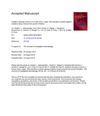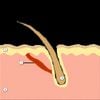Search
for
Did you mean Oxidative Stress?
Learn
5 / 6 resultslearn Neem Oil
natural substance from Neem tree with medicinal and pesticidal properties
learn Epidermal Growth Factor
learn Overview
learn Melatonin
hormone commonly taken for sleep aid has some topical benefits for hair
Research
5 / 1000+ resultsresearch The Interplay Between Finasteride-Induced Androgen Imbalance, Endoplasmic Reticulum Stress, Oxidative Stress, and Liver Disorders in Paternal and Filial Generation
Finasteride in male rats causes liver and metabolic issues in their offspring.

research Adult Skin Acute Stress Responses to Short-Term Environmental and Internal Aggression from Exposome Factors
Adult skin quickly reacts to short-term environmental and internal stress, leading to various skin issues and the need for protective measures.

research Oxidative Damage Control in a Human Mini-Organ: Nrf2 Activation Protects Against Oxidative Stress-Induced Hair Growth Inhibition
Activating Nrf2 protects human hair follicles from oxidative stress and helps prevent hair growth inhibition.
research OR2AT4, an Ectopic Olfactory Receptor, Suppresses Oxidative Stress-Induced Senescence in Human Keratinocytes
OR2AT4 helps reduce aging and cell damage in human skin cells.
research Cepharanthine, A Regulator Of Keap1-Nrf2, Inhibits Gastric Cancer Growth Through Oxidative Stress And Energy Metabolism Pathway
Cepharanthine may help treat gastric cancer by causing cancer cell death and affecting energy use.
Community Join
5 / 108 results
community Compressed part of research of theory of androgenic/anabolitic balance. AGA h-responders analytic. Theory of physio-metabolitic method of anti AGA treatment
The treatment for androgenetic alopecia involves using finasteride and minoxidil with intense exercise and cold exposure to boost metabolism and reduce androgenic effects, potentially leading to hair regrowth. This approach may activate biological pathways for improved hair and overall health.
community How ET-02 Works. Also no proof that it's better than Minoxidil. At least for now.
ET-02, a PAI-1 inhibitor, is not proven to be more effective than Minoxidil for hair loss. Other treatments like finasteride, dutasteride, PP405, and AMP-303 are also discussed, focusing on cellular senescence and oxidative stress.
community A concise, easy-to-understand post on Androgenic Alopecia theory and its practical applications
The mechanism of Androgenic Alopecia and practical applications of treatments like Minoxidil, Finasteride, RU58841, dermarolling, scalp massages, anti-fungals, progesterone, estrogen, PPAR-γ activators, reducing oxidative stress, and scalp exercises. It explains why DHT is important in AA and how other factors might be involved such as hypoxia, increased DKK-1 expression, morphological changes to the scalp, skull growth during childhood/puberty, and blood flow.
community For what it's worth, I just want to state that I also think that adding Dutasteride to Finasteride has made my hair worse
A user shared that adding Dutasteride to Finasteride worsened their hair loss, despite initial improvements with Finasteride alone. Others in the conversation debated the effectiveness of Dutasteride, with some suggesting individual responses vary and others defending its proven efficacy for hair loss.

community Physio-metabolic method of treating androgenic alopecia. Cold receptors. The relationship between DHT, cold receptors, minoxidil and antiandrogens
Treating androgenic alopecia with minoxidil, finasteride, and antiandrogens, alongside exercise, cryotherapy, and natural substances to stimulate cold receptors for better hair growth. The method focuses on enhancing treatment effectiveness by considering environmental and behavioral factors and the role of cold receptors and muscle stress.